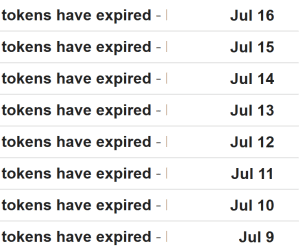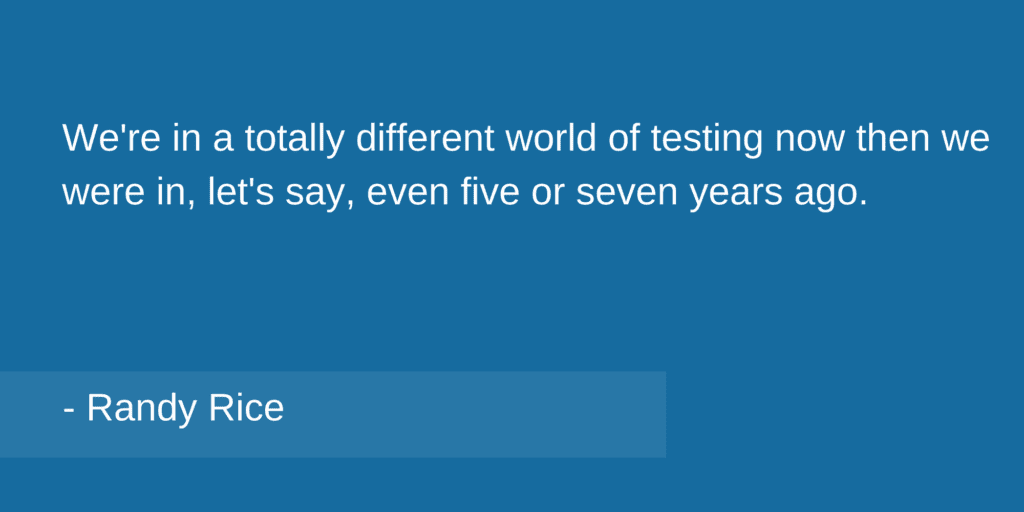10 App Mishaps That Create a Negative Experience for Customers

Quick! Your app is on fire and all of your customers are leaving the building!
Perhaps a little less dramatically, I’m about to detail 10 app mishaps that you definitely don’t want to let slide. Beyond the obvious (your app constantly crashes), there are plenty of issues that can be just as detrimental to the customer experience.
With so many options for B2B and B2C software, companies need to make sure they don’t sacrifice on CX. There’s simply too much competition.
Ready? Here are the bugs. So embarrassing.
1. Your app can’t handle its own popularity
In practice you can do things over and over and it seems like it’s going to work but then when you put out to a bigger environment, and the obvious example here is Pokémon GO, where suddenly it’s out, so many people are using it and it doesn’t function. – Josiah Renaudin
Now, Pokémon GO got so popular so fast, that we forgive it for its temporary challenges in scalability. It had enough publicity (and still does) to whether the storm—anyone who wanted to try it for the first time but couldn’t, would likely try again.
But 80% of consumers only attempt to use a problematic app 3 times or less—meaning that a sudden influx of new users could result in scalability bugs that ultimately turn off a horde of new customers.
One important strategy to combat this nightmare is to design automated tests that are scalable and adaptable, to try and prepare for large amounts of usage in a sandbox environment.
2. Your app commits email stalking (to the horror of the marketing team)
Automatic emails sent from mobile or web apps can be a godsend for increasing user adoption. There may be necessary set-up tasks (like linking a bank account or a social media account) before the app can truly make the user’s life more efficient.
Apps can also track a user’s login activity and check in on them when they haven’t been active lately.
But does your app take it too far?
I was once the recipient of daily emails reminding me that some critical access tokens had expired.

Too many incoming notifications.
Sure, these access tokens were critical to the app, but they weren’t critical to me. I didn’t need those reminders cluttering my inbox.
This app mishap isn’t necessarily a bug, but it can come off as one to your customers while making your business seem overly pushy. Testers should make sure to check the emails that are associated with their test accounts. You’d be surprised what forgotten messages might still be sent out to customers. And what seems like an okay frequency when setting the parameters might look really overwhelming in a real inbox.
3. Your app just got better (but now it doesn’t work)
The dreaded upgrade failure! Some upgrades happen without user knowledge, and if these upgrades aren’t cosmetic or noticeable, a user may have no idea why their favorite app is suddenly misbehaving.
But with an operating system upgrade that requires user permission to install, users will immediately connect any differences to that upgrade. When iOS 10.3.1 rolled out, many issues were reported, including screen freezes caused by three-finger tapping and error messages that requested the user plug the device into a computer to restore the OS.
There’s a YouTube channel for everything, including bugs.
Did you know there are hundreds of channels devoted to catching and recording glitches? Rack up too many of these in the search results for your brand name, and less tech-savvy customers could get the impression that your product is useless.
4. Your app updates too often
If your product requires that users approve the update before it downloads, you need to be mindful of how often they’re receiving push notifications.
Users might see constant upgrades as a negative, not a positive. They may perceive that something is always wrong with the app, or at the very least be annoyed by the constant request to update.
This causes users to ignore update notifications, meaning that in the event of a critical update, they don’t follow through. A continuously updated app is absolutely necessary for quality, but just make sure that upgrades are being combined as much as possible to lessen rollouts.
5. Your app is very persnickety about uploads
Nearly every application allows for some sort of upload, images being the most common. All features that include uploads require extensive testing because they can easily cause the most user frustration.
Think about it—when uploading, the user is in an active, not passive state. They are trying to do something—to accomplish it, get it done and move on. Apps that prevent the completion of a task are incredibly frustrating.
Of course, your app can’t accept every upload. There may be requirements for file type or size. But apps that don’t get a meaningful error message can be seen as glitchy even when they’re not.
6. Your app is a battery hog
36% of users will stop using a mobile app due to heavy battery usage. While there are now tons of options for portable charging, most people still want their mobile phone to last them throughout the day. So any app that noticeably drains battery life will have its usage curtailed.
By avoiding the use of extraneous graphics and animations and optimizing the application’s refresh rates based on the device battery level, developers can create apps that don’t place unnecessary strain on battery life.
To make sure that an app doesn’t drain device battery in the field, testers can conduct manual testing on the handful of devices most used by customers.
7. Your app is incredibly slow
App speed is critical, and something that requires a combination of simulated, manual and automated regression testing.
Android mobile apps can improve performance by dispatching work to multiple threads, meaning the UI may give the appearance that the action is complete while the backend is still processing the call. Web apps can increase efficiency by coding for user perception so that the frame of the app loads quickly while content might catches up.

The menu of the web-app paints an initial frame while the dashboard loads.
Testers should have an understanding of what performance-driven coding decisions have already been made so they can know whether a speed issue is a quick-fix and potentially high-priority bug or if it’s more of a feature suggestion.
8. Your app has a #responsivenessfail
Do you ever get sick of hearing the phrase “mobile responsiveness” touted as if it were the next big thing? People, mobile responsiveness is a requisite.
It’s time to stop talking about it when it goes right, and only talk about it when it goes wrong.
The worst crime an app can commit is when responsiveness is so poor that certain actions are impossible in mobile, like being unable to hang up a VoIP phone call—ouch.
Mobile responsiveness is old news to consumers, making it an even more critical component of QA efforts.
9. Your app isn’t ready for the real world
Maybe your app controls a smart appliance or works in conjunction with a smart wearable.
IoT is a disruptor in QA, causing us to reassess our assumptions and processes. When software is impacted not just by things like battery life and network connectivity but also weather, water, and other elements, anything could happen. Software testing consultant Randy Rice puts it this way:
The idea that you get a strategy in concrete and go forth with it and everything is going to be fine and dandy, it very seldom works out that way because we just don’t know what we don’t know.
A test strategy is either scalable, or it has to be reworked.
Home thermostat Nest had a software update that drained the device’s battery in cold weather, basically killing the thermostat when people needed it most. Because the weather was mild when released, the issue didn’t arise until two weeks later.
The truth is, the software testing industry is still developing ways to prevent these sort of issues while keeping QA on a budget.

10. Your app is hoarding all of the good content—and being rude about it
Exclusive content is very common in membership apps, or apps that come as part of a course. There may be sample content that entices someone to buy. Deepak & Oprah’s popular meditation program has content that is only available for a short period of time.
Let’s say you’re playing a podcast that is “limited edition” so to speak. You listen half-way through, go about your day, and don’t have time to listen to the rest. The next day, the app is still open on your phone’s tabs and you try to listen to the rest. But it crashes because the podcast is gone.
What should be a successful campaign to get someone to buy the full license is now a poor user experience. If your app has any sort of exclusive, gated, or limited content make sure that you protect the quality of the experience.
Otherwise, some who might have become a customer is turned off.
These app issues are no fun for customers and can quickly deteriorate their perception of your brand. Be vigilant and invest in excellent QA resources to keep customers happy.
